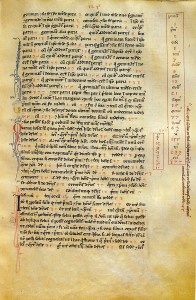 Any history of Western mathematics must include Islam and the Islamic culture.
Any history of Western mathematics must include Islam and the Islamic culture.
The Arts and Lectures Committee sponsored a lecture educating students on this influence Oct. 3 titled “The Mystery of Mohammad Ibn Musa: The first Algebra Textbook.” The lecture focused on eighth century Islamic mathematician Mohammad Ibn Musa. He has been called a national hero in modern Uzbekistan for his contributions to mathematics, primarily in the field of Algebra.
SRJC Mathematics Instructor Dean Gooch investigated the subject of Ibn Musa while on sabbatical. He found Ibn Musa to an enigmatic figure due to the conflicting reports saying he had at least three last names. Al Khwarazini alludes to either a town in what is now Southern Uzbebekistan or possibly the entire region of northern Persia while Al Majusi is related to the word magic. He has also been called Al Qutrubuli.
In 820 A.D. Ibn Musa was summoned to be the head of the House of Wisdom in Merv, Southern Turkemenistan. This intellectual society was the center of learning and knowledge of the Arab world. There he spent much of his time studying Hindu star charts and developing his mathematical theories.
Mohammad Ibn Musa’s first book was entitled “The Compendious Book on Calculation and Completion by Balancing.” In the book Ibn Musa commented on what he referred to as Hindu and Sanskirit mathematical forms, later known as Algebra, and how they applied to Arabic law. It featured word problems about dividing estates among heirs, debts, the return of a dowry and other civil issues. Ibn Musa used Algebraic principles, such as the quadratic formula, to solve these social problems. The book accorded its laws with both Islamic and local traditions.
This book was the famous first Algebra book, although it could be more accurately called the first Algebra book known to the West. It was first translated in Europe in 1145 by Robert of Chester. However, a much more effective translation was completed in 1831 by Frederick Rosen. The book cleverly featured two versions in the same edition, so while you could open and turn the English book left to right, you could also flip it around and read the Arabic right to left.
In his book “On Calculation With Hindu Numerals,” Ibn Musa introduced to the Arab world the number system that we use today. Prior to these Hindu or Arabic numerals, calculations were much more difficult. In the West, calculations were done using Roman numerals and the Abacus. The Near East used a similarly difficult system. “Ibn Musa is credited with bringing the Hindu number system to Islam and from there it was disseminated throughout the world including Europe,” Gooch said.
Both Arabic numbers and algebra itself are believed to come from India though the original texts are still unknown. Our knowledge of them comes from secondhand translations performed by scholars such as Mohammad Ibn Musa.
A perceptive physics student who observed the lecture said, “It’s interesting they didn’t come to a real conclusion. Ultimately you don’t know when or where he lived….(It) always hints back to Hindu and India. Hindu [culture] originated algebra, numbers, and most mathematics.”
- October 24Thousands protest against ICE deployment in the Bay Area
- October 18Thousands gather all across North Bay for second day of No Kings protests
- October 8Protesters gather to support, oppose trans athlete at SRJC volleyball match
- October 2SRJC dance coordinator absent from classes while critics and supporters continue to speak out
- September 14SRJC community rallies in support of trans volleyball player

